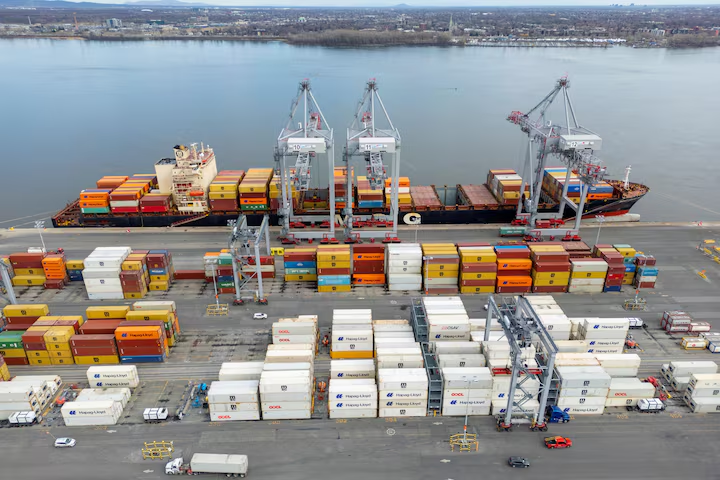Canada Boosts Exports to UK and Europe Amid US Tariffs

OTTAWA, July 9, 2025 — In response to growing trade tensions with the United States, Canada is accelerating efforts to diversify its export markets. According to new government data, Canadian exports to the United Kingdom, European Union, Australia, and several Asian nations have surged over the past year, even as exports to the U.S. have declined significantly.
Canadian Exports Shift Away from the U.S.
Between May 2024 and May 2025, the share of Canadian exports going to the United States dropped by 10 percentage points—from 78% to 68%—largely due to a slump in automotive, steel, and aluminum exports. This marks a significant shift for a country whose economy has long been tightly interwoven with its southern neighbor.
Despite this decline, the U.S. remains Canada’s top trade partner. However, the data points to increased export activity to countries such as the UK, Germany, Japan, Singapore, and Brazil. This shift reflects a broader strategy to reduce economic dependence on U.S. markets amid protectionist trade policies.
Gold and Energy Drive Trade with New Partners

Statistics Canada reports a substantial spike in gold exports, particularly to the UK, which is considered the world’s primary gold trading hub. In May 2025 alone, Canada’s gold exports to the UK rose 473% in value and 312% in volume compared to the previous year.
Canada has also expanded exports of petroleum, uranium, and pharmaceuticals to partners in Europe and Asia. Other commodities—ranging from grain to specialty chemicals—have found new buyers in Italy, the Netherlands, and Indonesia.
“This is a good thing for Canadian diversification,” said Stuart Bergman, chief economist at Export Development Canada. “But it’s not about replacing U.S. trade entirely. That would be crazy.”
UK Replaces China as Second-Biggest Export Market

From March to May 2025, the United Kingdom overtook China as Canada’s second-largest export destination. Exports to China declined following continued restrictions on canola and crude oil imports.
The reorientation toward trusted allies comes after Prime Minister Mark Carney’s Liberal government campaigned on reducing dependence on the U.S. economy and building resilient global trade partnerships.
Trade Diversification Has Its Limits
While exports to other countries grew by nearly 42%—or C$5.7 billion—in May, they still didn’t fully offset the C$7.7 billion drop in exports to the U.S. during the same period. The total value of Canadian exports to the U.S. fell to C$43.93 billion, down from C$51.61 billion the year prior.
Consultant Mike Chisholm cautioned that decades of supply chain integration with the U.S. make complete trade decoupling unlikely.
“Canadian businesses are opening offices elsewhere, but deep logistical ties and existing infrastructure mean the U.S. will continue to be vital.”
Political Tensions Loom Over Trade Talks
President Donald Trump’s administration imposed steep tariffs—50% on steel and aluminum, and 25% on Canadian-made vehicles—leading to retaliatory tariffs from Ottawa. A final trade agreement is expected by July 21, or Canada may escalate countermeasures.
For author: Staff Writer
Courtesy of: Forbes
Source: Reuters
: 37







